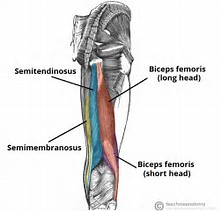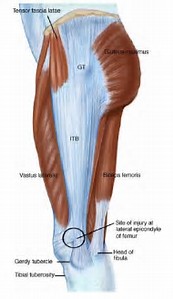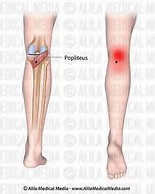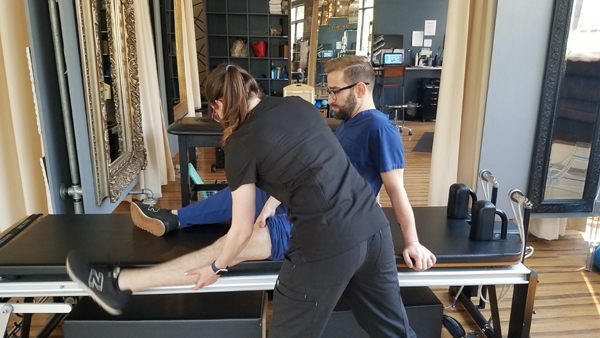Licensed Massage Therapist, Amy Montia reveals the different massage therapy methods used to release tension around the knee and explain how acute or insidious injuries are treated.
Knee pain is frustrating, especially when it starts to compromise form and hinder you from performing at your best. If you have a sports related knee injury, I suggest you treat it now. Don’t wait. Your body needs knees to function properly.
As the age-old song implies, your knees are indeed connected to the rest of your body. And the longer you try to push through the knee pain, the more likely you’ll be to find yourself seeking treatment later on for compensatory pain in your neck, shoulder, back, hip, arch, foot or toe.
Massage therapy is a great way to treat and better understand the root of your knee pain.
Is the Injury Acute or Insidious?
Acute Problem
Was the pain sudden? Did pain occur following a quick movement, forceful fall, knee twist, kick to the side of the knee, etc? This is an acute injury and you should see a medical professional immediately, as there might be a diagnosis of torn meniscus, muscle strain or ligament injury. In the meantime, RICE (rest, ice, compress, elevate) is the way to go. Massage Therapy at this phase should only be gentle and light with a goal to promote lymphatic circulation and minimize swelling.
Insidious Problem
Or maybe your knee pain started as a niggling vague annoyance? Perhaps the pilot light was an old ankle injury, minor knee sprain in high school, a bad fall some years ago (that you thought healed just fine), or even poor posture? This type of knee injury is considered to be chronic (or insidious). Micro-trauma accumulates over time. If left untreated, the condition fueled by progressive muscle imbalance and chronic inflammation around the knee can turn into a full blown acute and stubborn injury.
Assessment and Treatment: how to massage for knee pain
Massage therapists try to unravel and release structures around your knee that are likely to exacerbate pain. Techniques like effleurage, petrissage, muscle stripping, trigger point therapy, myofascial release, cross-fiber friction, and ischemic compression are used to restore integrity and balance to the knee joint.
There are lots of contributing factors making every person’s knee injury unique. An orthopedic-trained Massage Therapist should first do a simple assessment, and then make a plan of action to work and build from.
The assessment gathers info about your injury history, pain patterns, joint movement and postural alignment. We also assess the length, strength and quality/feel/composition of the muscles and structures around your injured knee, and beyond into your hips, spine and ankles.
Therapists use clues like pain location, simple movements that recreate symptoms, and palpation as a starting point for relieving knee pain.
Along with myofascial work to address any scar tissue around the knee joint line (retinaculum), the following muscles are most frequently addressed during a knee injury-focused massage therapy session:
Quadriceps

Hamstrings

IlioTibial Band (IT Band)

Gastrocnemius

Popliteus

Conclusion
After reading this article, hopefully you’ll give Massage Therapy a shot for sports-related knee pain. I recommend scheduling regular sessions 1-2 times per week with the same therapist for at least 3 weeks to determine its effectiveness for your injury.
Massage Therapy for knee pain is ideal in conjunction with a corrective exercise plan designed by a chiropractor with a sports injury specialty or a physical therapist, both services available to you at Physio Logic in Downtown Brooklyn.
You’ll be a happier person and perhaps a better athlete if you aim to understand what’s causing (contributing to) your knee pain, and treat it properly.

